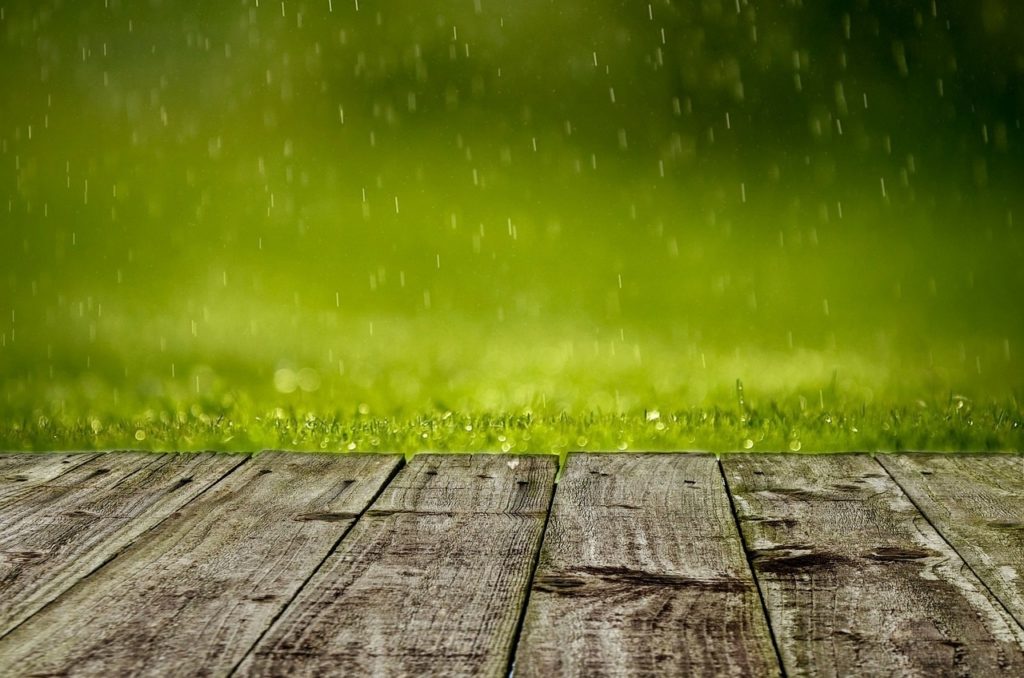What Does Too Much Rain Mean To Your Landscape
 Plants and lawns love water, right? Well, yes, in the right quantity. Can too much rain have a negative effect on your landscape? Absolutely.
Plants and lawns love water, right? Well, yes, in the right quantity. Can too much rain have a negative effect on your landscape? Absolutely.
July, August and September have seen an incredible amount of rainfall in our area. The Washington Post reported that the combined July-August total of 14.56 inches ranks as the 10th-wettest such two-month stretch in D.C. history, and the wettest since 16.42 inches fell during these two months in 1969. September proved to be the fifth wettest September on record.
As with most things, too much of a good thing is simply too much of a good thing.
 Root Damage
Root Damage
Plant roots require air to survive and help the plant flourish. When there is too much water on and in the ground, plant and grass roots literally suffocate and rot. The result of this is that ornamental plants yellow, drop leaves, wither and die. Lawns will show spotty areas of dead grass.
Solution: There is no fix for this other than to wait for the ground to dry up, replace plants and re-seed dead areas of lawn.
Insects
Some pests seem to thrive in the rainy weather. Insects like mosquitoes breed when it’s wet. These troublesome pests need standing water to lay their eggs in, but it doesn’t take much at all to satisfy this need. After a rain, any standing water will do, puddles, flower pots, bird baths, and clogged gutters make great spots for eggs. The rain also encourages other pests to breed. Pests such as ticks and fleas thrive in warm, humid weather so they breed much quicker during rainy periods resulting in a population explosion.
Solution: Be sure to empty any container that has water sitting in it. Consider a service that applies mist to eradicate mosquitoes and ticks (hint: Allentuck Landscaping Co. has a fantastic organic program for this).
Fungal Issues
Water, gray skies and humid conditions are the perfect conditions for a variety of fungal issues effecting both ornamental plants and turf grass. Black Spot, Powdery Mildew and Dampening Off  are some of the fungal problems being seen on ornamental plants. Red Thread and Dollar Spot are affecting turf grass.
are some of the fungal problems being seen on ornamental plants. Red Thread and Dollar Spot are affecting turf grass.
Solution: Luckily, most fungal diseases are treatable with either organic applications or fungicides. Some fungal diseases even go away on their own as weather conditions improve.
Erosion
Water always runs downhill, and sometimes it takes soil with it. Not only has there been a lot of rain this summer, it has come in torrents. Rivers of water flowing through properties has been a common site. These rivers have washed away good soil and caused rutting. Whereas turf grass and groundcovers could be relied on to hold the soil, the excess water has weakened or killed these plants leaving nothing to counteract the water flows.
Solution: These areas can be re-established once the weather conditions change. Another solution is uses gravel area to allow the flow of water rather than fighting it. Also consider installing surface drains and taking downspout pipes underground to eliminate some surface water.
Long Term
With as much rain as we have had, the soil is going to take a while to dry out. In many cases, it may take weeks or months to even recognize the damage too much water has done to landscape plants and lawns. Look for plant decline, slowed growth and yellowing foliage.
Every year has its weather challenges. Be it too much snow, too much heat, not enough rain or this year’s challenges. The landscape and lawn are part of nature and must contend with whatever is thrown at it. Occasionally, it just needs our help.
Allentuck Landscaping Co. is Your Residential Landscape Company
Phone: 301-515-1900 Email: info@allentucklandscaping.com

At Allentuck Landscaping Company, our mission is to create beautiful environments for people to enjoy. We see landscaping as a way to improve people’s lives.
The Allentuck Landscaping Company team has been a leading landscape company in Montgomery County, Maryland for over 28 years with our turnkey approach to landscape design, installation, construction and maintenance. Most companies try to serve many types of customers at the same time; homeowners, shopping centers, office buildings and the list goes on. At Allentuck Landscaping Co., we focus on one customer, you, the homeowner. We have a singular focus on bringing you the best landscape practices, the best customer service, and the best value for your home.
Services Provide – Master Landscape Plans, Complete Maintenance Programs, Plantings, Patios, Walkways, Retaining Walls, Water Features, Outdoor Lighting, Outdoor Kitchens, Trellises & Pergolas, Irrigation Systems, Drainage Solutions, Grading & Sodding. Fire Pits & Fire Places, Spring Clean Ups, Decks, Fences, Mosquito & Tick Control, Deer Control.
Areas Served – Chevy Chase, Bethesda, Potomac, Rockville, North Potomac, Darnestown, Gaithersburg, Germantown, Damascus, Boyds, Clarksburg, Ijamsville, Urbana, Frederick in Maryland and Washington DC.

